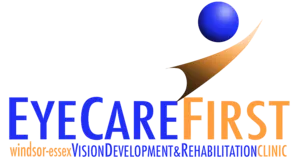
How Do Wolff Wands Improve Vision?
Sometimes the most effective treatments are the simplest. Wolff wands are decidedly low tech, yet help vision therapists treat conditions ranging from tracking disorders to problems with the eyes' ability to focus on near objects.
What are Wolff Wands?
Wolff wands are the creation of the late Dr. Bruce Wolff, a vision therapy pioneer. The wands are used in pairs and consist of 12" long metal rods topped with reflective silver and gold balls.
What Conditions Are Treated with Wolff Wands?
Vision therapists use the wands to treat a variety of conditions, including:
- Peripheral Visual Awareness Issues. You may be focusing on these words at the moment, but you're probably also aware of images and movements at the edges of your vision. People who have poor peripheral visual awareness only focus on objects and images directly in front of them. Poor peripheral visual awareness, also called tunnel vision, can be a safety concern. If you're not aware of movements or objects in the periphery of your vision, you may more likely to trip over an obstacle or fail to notice another car while you're driving.
- Convergence Insufficiency. Convergence insufficiency (CI) occurs when your eyes don't work well together when focusing on near objects. The disorder can cause double or blurred vision, headaches, and eye strain. If you have CI, you may lose your place frequently while reading, or have difficulty concentrating or catching items. If CI isn't treated promptly, your brain may eventually ignore input from one of your eyes, causing a condition called amblyopia (lazy eye).
- Tracking Problems. The ability to track objects with your eyes is essential for reading, eye-hand coordination, good handwriting, and copying words from a blackboard or whiteboard.
- Saccadic Dysfunctions. Saccades are involuntary eye movements that occur when your gaze shifts from one object or point to another. If you have a saccadic dysfunction, your eyes may not move quickly enough, causing difficulties with keeping your place while reading, playing sports, using coordination, copying words, or tracking objects.
- Accommodative Dysfunctions. Accommodative dysfunctions affect the ability to focus and can occur due to spasms in the muscles that control the eyes or difficulties contracting or relaxing the muscles. Symptoms include headaches or eyestrain after reading just a few paragraphs, blurry vision during close work, and difficulty concentrating.
- Anisometropia. It's not unusual for vision to be slightly better in one eye, but sometimes the differences can be significant. Prescription eyeglasses usually improve vision, but vision therapy may also be needed in some cases.
How Can Wolff Wands Improve Visual Disorders?
Wolff wands can be used to both diagnose and treat disorders. During a patient's comprehensive eye exam, the vision therapist moves the wands through the field of vision at eye level, from left to right and above or below eye level. If this test and others reveal a problem, use of the wands may also be incorporated into the vision therapy plan.
During one therapy exercise, patients sit or stand, keeping their heads still. The therapist moves the wands in circles or other patterns and calls out which wand the patient should focus on. At the beginning of the exercise, patients may be asked to cover each eye in turn when viewing the wands, then use both eyes together to follow the moving balls. The silver and gold balls capture the patient's reflection, making it a little easier to maintain focus on the moving balls.
Glasses that contain prisms may be worn during some Wolff wand exercises. Prisms are special lenses that improve spatial awareness, eye alignment, and perception. While wearing prisms during another vision therapy exercise, the patient moves the wands and reports what he or she sees as the position of the balls change. Using this exercise, it's possible to decrease tunnel vision and improve the ability to see images and objects at the edges of the visual field.
Wolff wands are just one of the techniques vision therapists use to help their patients improve vision. Vision therapy is very helpful in treating disorders common in childhood but is also effective in helping adults make the most of their vision. If you're concerned that you or your children may have a vision disorder, get in touch with us and schedule a comprehensive eye examination.
Sources:
Vision Development & Rehabilitation: High Prevalence of Visual Middle Shift Syndrome in TBI: A Retrospective Study, 10/16
https://cdn.ymaws.com/www.covd.org/resource/resmgr/vdr/vdr_2_3/VDR2-3_article_Tong_web.pdf
Optometry Times: Vision Therapy: A Top 10 Must-Have List, 8/1/14
http://www.optometrytimes.com/modern-medicine-cases/vision-therapy-top-10-must-have-list
OVP Journal: Vision Therapy Procedures for Tunneling, 8/15 Dr. Jeffrey Getzell
https://www.ovpjournal.org/uploads/2/3/8/9/23898265/ovp3-4_article_getzell_web.pdf


